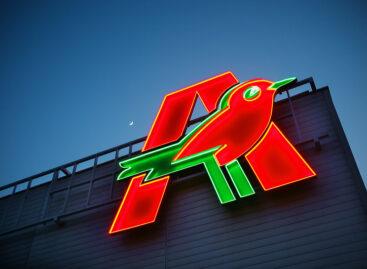Magazine: Fish market
Compared with Europe and the rest of the world, Hungarians eat little fish and seafood, but it is good news that consumption is growing.
The majority of fish produced in Hungary comes from lake fish farming, and it appears in the market in the autumn-winter period. Hungarian fish consumption has increased in the last 20 years, but this growth was mainly the result of buying more processed products (mainly imported ones) and due to the output of intensive fish farming.


Attila Sárközi
sales director
FRoSTA
Attila Sárközi, sales director of Frosta revealed that Hungarian fish consumption was at 6.4kg/person in 2017, which was much more than the 3-4kg/person in the 2005-2013 period. The company’s experience is that demand is shifting towards higher quality. Although Frosta only has sea fish products, even they can feel the positive effects of the government campaign promoting freshwater fish consumption.

András Béki
purchasing manager
Rozmár Nagykereskedés
András Béki, purchasing manager of wholesaler Rozmár Nagykereskedés informed us that both the retail and the HoReCa sector purchase more fish from them than 2 years ago. What is more, they sold twice as much fruits of the sea to gastronomy units than 2 years earlier. Demand is the biggest for ready-to-cook products.

Ákos Bősze
target group manager – HoReCa
METRO
Ákos Bősze, METRO’s target group manager–HoReCa spoke to us about great changes in the consumption habits of generations Y and Z: young Hungarians eat about twice as much fish as the average Hungarian. The company has found that the market is less Christmas-centred than before and that consumption of fruits of the sea increases in the summer months.
Mr Sárközi told about the HoReCa sector that the VAT cut on fresh fish indirectly has its effect felt in the HoReCa segment too. Frosta’s ready-to-cook breaded fish products find their place in every segment of the HoReCa channel, but their largest buyers are public sector catering units. These kitchens have also started going in the direction of quality products, as breaded fish fillet has a nearly 90-perecnt share in sales. Mr Béki informed that loin products had entered the HoReCa channel. Loin looks good on the plate – wit it what the guest gets is only the premium stuff from a fish. Most loin products are from various types of cod. He added that restaurant owners are looking for high-quality products and they like it if they get them in portions. Mr Bősze told our magazine that the type, food offering and guests of a given restaurant have big influence on how much processed they want their fish to be. Since one of restaurants’ biggest problems at the moment is the workforce shortage, demand is increasing for ready-to-cook fish products.


Varga László
áruházigazgató
Auchan Retail Magyarország
What about the hypermarket channel? László Varga, store manager of Auchan Retail Magyarország’s hypermarket in Budaörs was happy to report that fish consumption is growing, but he added that about 40 percent of their annual sales is still realised in the Christmas period. However, the store manager’s experience is that more and more shoppers like to try new products and preparation methods. The Budaörs Auchan is special because it has a fish bistro, where customers get the chance to try special fish dishes.
Related news
Auchan offers its regular customers extra shopping opportunities after closing
Auchan is offering a special shopping opportunity to its regular…
Read more >Auchan also entered the Dubai chocolate competition
As the Christmas season approaches, not only is there a…
Read more >Zsolt Liptai became the winemaker of the year
The Hungarian Wine Academy (MBA) has awarded Zsolt Liptai, the…
Read more >Related news
First We Feast studio, which produces Hot Ones, has been sold – George Soros’ company is among the new owners
Buzzfeed has sold its First We Feast studio, which produces…
Read more >(HU) Az ételárus nehéz kenyere – A nap videója
Sorry, this entry is only available in HU.
Read more >








